10 Strangest Things Found Growing Out of Human Skin
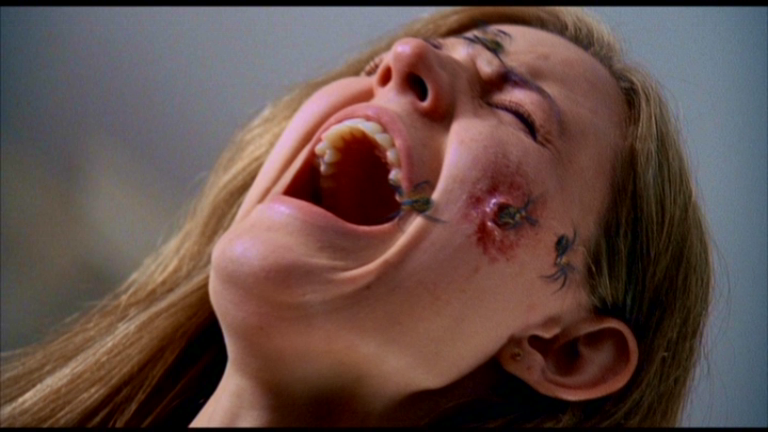
When we think of things that could grow out of human skin, we rarely consider anything further than hair, fingernails, or toenails. Humans being mammals, we may go so far as to consider body hair as a type of fur, but certainly we would not even begin to think that humans would grow anything as foreign as plant material, feathers, or horns. However, after reading the following real-life examples, we may have to broaden the horizons of possibilities when it comes to what can be seen protruding from human skin.
1. Tree Branches

Victims of a hereditary disease known as epidermodysplasia verruciformis are subject to wart-like growths that, while not actual tree branches, bear a remarkable resemblance to tree bark and branches. In addition to the bark-like color and texture, these warts tend to grow larger than what would normally be considered wart-sized and are usually found on the hands or feet, although they can grow on any part of the skin. In some notable cases, the growths can weigh several pounds and severely disfigure the areas where they grow. Also called Lewandowsky-Lutz displasia after the physicians who first documented records of it, the disease does not yet have a complete cure. However, there are treatment options, some of which involve surgery to remove the growths and skin grafts to replace large areas that were surgically altered. In at least one case, Indonesian male Dede Koswara endured repeated surgeries to remove the growths, resulting in a one-time removal of over four pounds of warts.
2. Horn
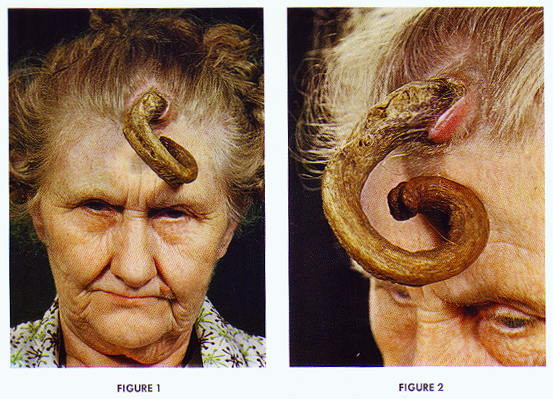
In cases of a similar skin condition, keratinous skin tumors can form in the shape of small horns, usually on the face or hands. While they usually remain fairly small at a centimeter or less, there have been rare cases where the horns have grown much larger. In one case documented in the early 19th century, Frenchwoman Madame Dimanche grew a horn of over nine inches on her forehead. It was eventually successfully removed. In another case in China, an elderly woman had what her family said resembled devil’s horns, about six centimeters long on one side of her forehead and the second growing on the other side. As these horns are made of the same material as fingernails, in most cases they can be removed fairly easily with a sterile razor. However, as their existence can sometimes signal an underlying case of skin cancer, simply removing them may not solve the entire problem.
3. Feather

In a news story from early December 2012, a baby girl had a single black feather plucked from her neck after being taken to a hospital for what appeared to be an infection. Mya Whittington, not quite seven months old at the time, was thought to have ingested or inhaled the feather from a feather pillow at her house several months prior to her showing signs of distress. The feather is then thought to have pierced the inside of her cheek or throat, resulting in the body’s natural defenses trying to force it out. When the side of Mya’s neck swelled and became inflamed, she was taken to the hospital and initially treated with antibiotics for what was thought to be a staph infection. Eventually, the pediatrician noticed what appeared to be a stick or string protruding from the swollen spot on her neck and removed what turned out to be a two-inch black feather.
4. Parasites
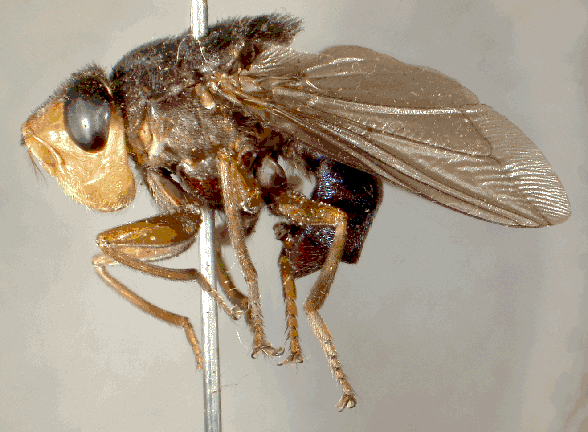
It turns out that in some areas of the world, a mosquito bite may be more than just an itchy annoyance. It could also be an entry point for the larvae of the human botfly, which will then incubate in a subcutaneous layer of your skin for about eight weeks if not removed. After the eight weeks, they will drop out naturally and develop the rest of the way to maturity on their own. The female botfly attaches her eggs to a captured mosquito or muscoid fly before releasing it. The eggs then hatch and the larvae enter the skin when the mosquito is feeding or simply fall off and find their way into the skin on their own. Either way, they can only survive the entire eight week feeding period if their entry point does not become infected, so it is thought that the botfly larvae may produce some antibiotic secretions to prevent infection while it takes up residence in the skin.
5. Elephantitis

Once again, the mosquito’s bite may not be the worse thing about the insect encounter. Certain microscopic parasitic worms carried by mosquitoes, when combined with other factors, can lead to elephantitis, also called elephantiasis. Elephantiasis is a disease in which parts of the skin and underlying tissues become enlarged to the point of being more elephant-sized than human-sized. The most common areas affected by this disease are the legs and male genitals. In some cases, the scrotum can become as big as a basketball. The disease is most common in tropical areas and parts of Africa. The adult parasitic worms involved with elephantiasis can only live in human lymph tissues. The disease can also occur in the absence of parasitic invasions, in which case it is thought to be caused by contact with soils rich in alkali metals such as sodium and potassium.
6. Fingernails Where Hair Should Be
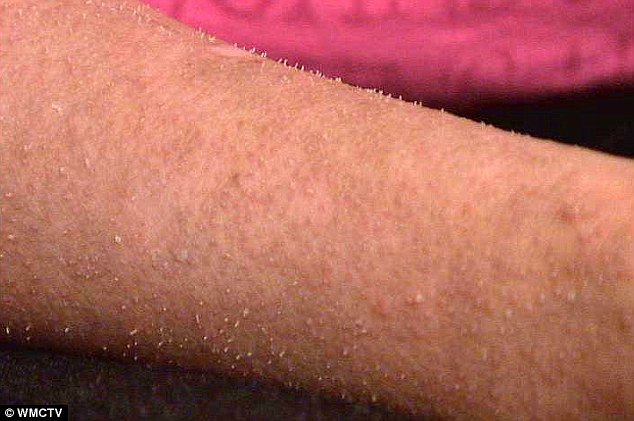
Suffering from an unknown disease with an unknown cause, one woman has found that all of the hair on her body is being replaced with hard scabs resembling fingernails. In essence, human nails are growing out of her hair follicles instead of human hair. It began with an allergic reaction over three years prior to her current condition, although doctors have no idea why or how one would lead to the other, only that Shanyna Isom’s body is producing twelve times the number of skins cells per hair follicle as someone without this disease. While attempts to isolate the cause have been unsuccessful, doctors have been able to control the symptoms and return Shanyna to some form of mobility and normal functioning. She also wears a wig and a hat to disguise the fact that she has lost all of the hair on her head because of her mystery illness.
7. Thread/Fibers
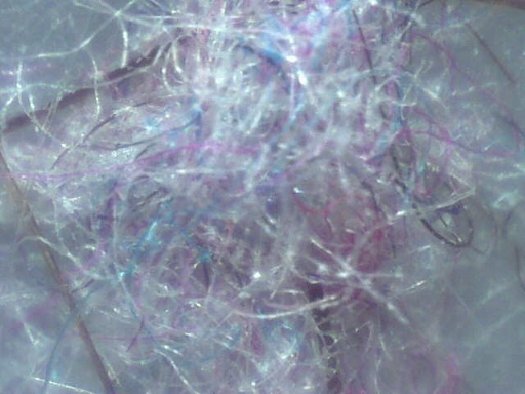
Possibly the strangest and most unique of all those listed here, Morgellons disease is not even widely recognized in the medical and scientific community as a valid disease. However, patients who purportedly have this disease report common symptoms that include sensations of bugs crawling under the skin, skin lesions that secrete a substance that prevents them from healing, and the presence of white or multi-colored fibers growing from those lesions. When enough publicity finally pressured the scientific community to examine these fibers, they were found to have no known man-made origin and some very strange animal and plant properties, the strangest being phosphorescence. In addition, it was found that the substance secreted from these fibers bore a strong resemblance to plant biofilm. As none of these symptoms can yet be explained, it has been common for the medical community to attribute the condition to a psychological problem rather than a physical one, frustrating those suffering from the disease.
8. Blue Pigment—Argyria

While not technically growing out of human skin, a buildup of silver or silver sulfide in the skin can cause the skin itself to turn blue or bluish gray. Just as silver is used in photography because of its sensitivity to light, so silver in the skin reacts to sunlight by causing the skin to darken. Chronic ingestion of silver and silver products can cause generalized argyria, while use of topical substances containing silver can result in localized argyria. It is generally considered irreversible, and the only way to avoid the skin discoloration in the presence of silver in the body is to avoid the sun. Argyria is considered a cosmetic issue only, as silver is not generally toxic, but the social and emotional implications of having blue skin can be debilitating. However, it takes exposure to ingesting or inhaling large amounts of silver compounds over many months or years for the accumulation to be sufficient to cause this disease.
9. Excess Hair
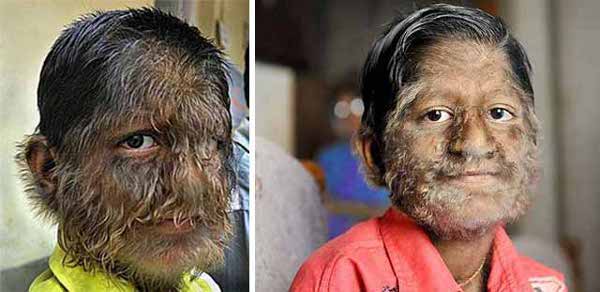
Hypertrichosis, also called Werewolf Syndrome, is an excessive and abnormal amount of hair growth on part or all of the human body. This phenomenon can be found localized to certain parts of the body or generalized to cover all of the body, and can be either congenital or acquired. Many 19th and early 20th century circus sideshow acts, such as The Bearded Lady, were thought to have hypertrichosis and were often publicized as having both human and animal characteristics. Of the two origins of this condition, congenital is the more rare, being present at birth due to a genetic mutation. Acquired hypertrichosis can have multiple causes and always occurs after birth. The causes can include cancerous diseases, eating disorders, and possible side effects of certain drugs. Acquired hypertrichosis can usually be treated.
10. Fleas
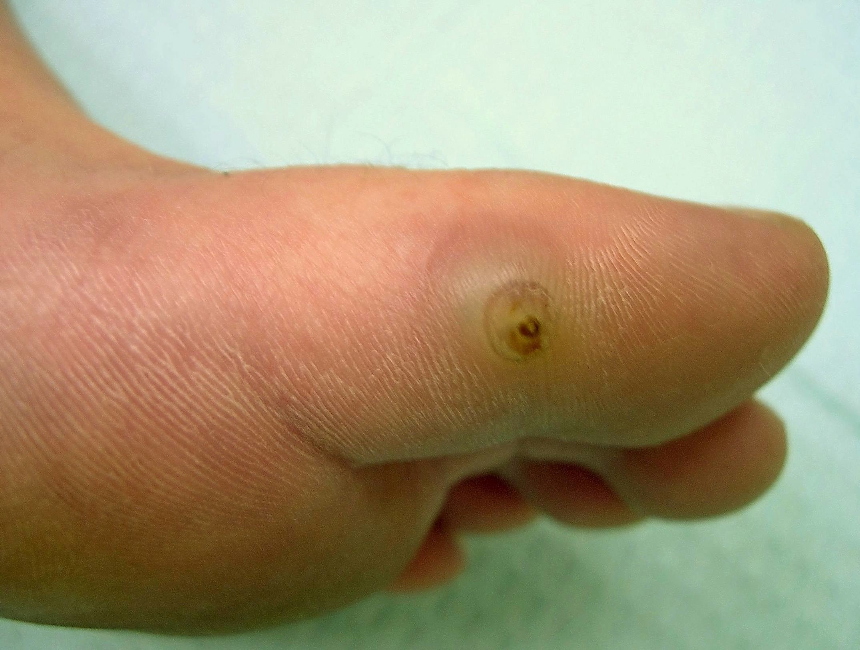
Tungiasis is a skin condition caused by infestation of the skin by the Tunga penetrans flea, more commonly called a sand flea, found in various tropical areas such as the Caribbean, parts of Africa, India, and South America. Sometimes mistakenly called Chiggers, this particular flea varies in that only the adult flea feeds on the host and only the female stays attached to the human skin. Chiggers, on the other hand, are mites that belong to the arachnid family, with both larvae and adults that feed on the host. They also do not lay eggs as the Tunga penetrans flea does. Symptoms of this flea infestation include inflamed and itchy skin patches, pain and lesions that have a black dot surrounded by red angry skin and something resembling a white halo. Treatment includes surgical extraction of the embedded flea and antibiotics to curtail infection.
So, the next time you feel frustrated because your hair won’t grow the way you want it to or your nails won’t grow or continuously break, consider the alternate extremes as described in some of these cases above. And the next time you think you have pest control problems in your home or yard, consider how much worse it could be if those pests were actually under your skin. Not to mention what could happen if you suddenly found yourself sprouting feathers, threads, excessive wart-like growths, or even blue skin. It’s enough to make the squeamish among us want to barricade ourselves in a safe and sterile indoor environment forever.
 Follow
Follow